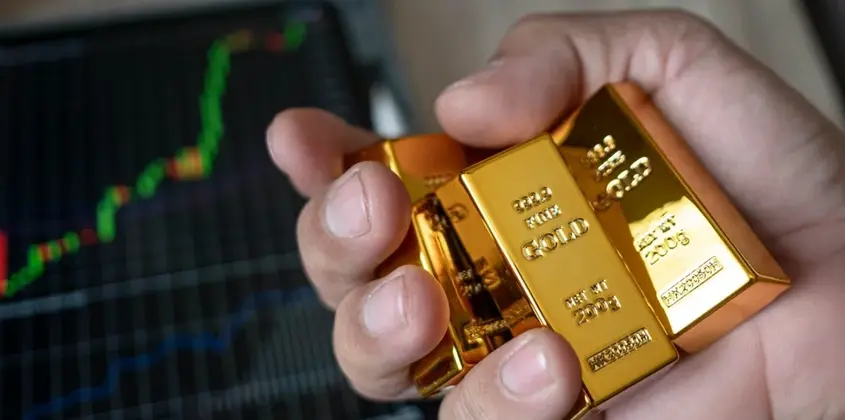As of April 15, 2025, gold prices have shown remarkable resilience, maintaining proximity to record highs amid ongoing U.S.-China trade tensions and growing economic uncertainty. Investors are increasingly turning to gold as a safe-haven asset, seeking stability in a volatile market landscape.
Gold Prices Near Record Highs
Spot gold is currently trading at approximately $3,224.60 per ounce, slightly below the record high of $3,245.69 reached earlier this month. Gold futures for June delivery are steady at $3,240.85 per ounce. The sustained high prices reflect persistent demand driven by geopolitical tensions and economic concerns.
Impact of U.S.-China Trade Tensions
The trade conflict between the United States and China has intensified, with the U.S. imposing 145% tariffs on Chinese imports and China retaliating with 125% tariffs. While some electronic goods have been temporarily exempted, the overall uncertainty continues to unsettle markets. President Trump’s recent statements suggest potential new tariffs on electronics and pharmaceuticals, further fueling investor anxiety.
Recession Fears and Monetary Policy
The escalating trade war has heightened fears of a global economic slowdown. Investors are increasingly concerned about the possibility of a U.S. recession, prompting a shift towards safe-haven assets like gold. The Federal Reserve’s cautious stance on interest rates, amid economic uncertainties, has also contributed to gold’s appeal.
Central Bank Demand and Investment Inflows
Central banks worldwide are bolstering their gold reserves, with Goldman Sachs reporting an average monthly purchase of 50 tons, up from previous estimates. This robust demand, coupled with increased inflows into gold-backed exchange-traded funds (ETFs), underscores gold’s role as a hedge against economic instability.
Market Outlook and Analyst Predictions
Financial institutions are revising their gold price forecasts upward. Goldman Sachs has raised its year-end target to $3,700 per ounce, citing strong central bank demand and recession risks. In extreme scenarios, prices could surge to $4,500 per ounce. Other analysts anticipate continued volatility, with gold prices responding to developments in trade policies and economic indicators.
Performance of Other Precious Metals
While gold has outperformed, other precious metals have shown mixed results. Silver futures have experienced slight declines, and platinum prices have remained relatively stable. Copper prices have dipped, reflecting concerns over reduced demand from China amid the trade dispute.
Conclusion
Gold’s steadfast performance amid geopolitical and economic turbulence highlights its enduring status as a safe-haven asset. As trade tensions persist and recession fears loom, gold is likely to remain a focal point for investors seeking stability. Monitoring policy developments and economic indicators will be crucial in assessing gold’s trajectory in the coming months.
FAQs
Q1: Why is gold considered a safe-haven asset?
A1: Gold is traditionally viewed as a safe-haven asset because it maintains value during times of economic uncertainty, inflation, or geopolitical tensions, providing a hedge against market volatility.
Q2: How do trade tensions affect gold prices?
A2: Trade tensions can lead to economic instability and market volatility, prompting investors to seek refuge in gold, thereby increasing its demand and price.
Q3: What factors could influence future gold prices?
A3: Future gold prices may be influenced by central bank policies, inflation rates, geopolitical developments, currency fluctuations, and global economic growth trends.
Disclaimer
This article is for informational purposes only and does not constitute financial advice. Investors should conduct their own research or consult a financial advisor before making investment decisions.



